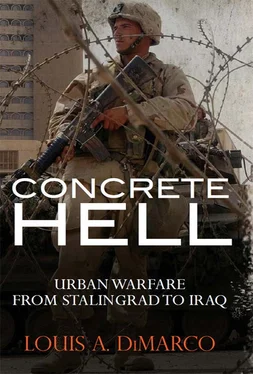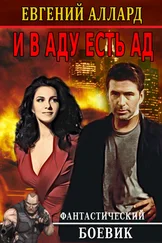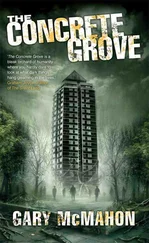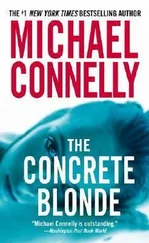Louis A. DiMarco
CONCRETE HELL
URBAN WARFARE FROM STALINGRAD TO IRAQ
Over the course of a lifetime associated with the military and traveling around the world I have had the good fortune of working and serving with some of the finest soldiers anywhere. Three of them stand out as representing the soldierly virtues of tactical and technical excellence, scholarship, and most important, leadership. This book is dedicated to them and their inspiring example. I would follow them anywhere. They are: Colonel French L. MacLean, Colonel Thomas A. Dials, and Colonel Peter Wells.
This short history is meant to describe the urban battlefield as it evolved over the last half of the 20th century and into the first decade of the 21st. In describing the past, I believe, it also describes the future. Regardless of the basis of one’s view of the future, whether it be focused on competition between major world powers such as the US and China, or a persistent struggle between the forces of radical Islam and the west, the 21st century is going to be a century of conflict. I believe that conflict will largely occur in cities, and the keys to understanding the conflicts of the future are illustrated in the urban battlefields of the past.
Urban areas are often absolutely critical strategic objectives. They gain the attention of the political leaders of both sides in a conflict, and often of the civilian population as well. They often have a political value that is of much greater strategic importance than the purely material military advantage they provide to either side. Thus, before and during urban combat, there must be close coordination between the tactical actions and requirements and the strategic goals and objectives. Operational-level commanders provide the link between the tactical and strategic level of war and often their understanding and integration of the two very different levels of war is critical to success on the urban battlefield.
The past illustrates many of the essential tactics of urban conflict. Many urban tactical techniques essential for success have been developed over the last half century. These include the requirement for the battle to be an all arms conflict that includes a host of equally important capabilities as diverse as the need for armor and the requirement for well-trained snipers. Another more recent tactical need that has shown itself critical in the complex urban environment is a comprehensive intelligence system adapt at analyzing and understanding the human component of the environment.
Past urban battles also describe operational and strategic requirements for successful urban battle. One of the basic operational essentials of urban battle success is isolating the enemy combatants inside the city. The history of urban combat makes plain that when the enemy is isolated then success follows. When the enemy in the urban battle is not isolated from outside support, success may be much more difficult or impossible. A corollary to this historical observation is that often the battles outside the city to isolate it from support are more difficult, consume more resources, and are more decisive, than the actual house-to-house fighting inside the city.
The battle histories described in this work are the result of research in primary sources and the most authoritative secondary sources available. Many of the battles described here, such as the battle for Stalingrad, have been the subject of multiple excellent histories by some of the finest military historians. This work in no way is a substitute for those superbly researched detailed battle histories. My intent in this work is to make three contributions. First, provide a basic understanding of the multiple dimensions of the urban battlefield, the battlefield which I believe will dominate warfare for the next century. Second, provide analytical insights regarding the urban battlefield based on the historical record of urban combat. That is, to point out critical tactical, operational, and strategic considerations which have relevance to the battlefields of today and tomorrow. Finally, this work, by examining the evolution of the military experience on the urban battlefield since 1942, will show how the urban battlefield has evolved from relatively simplistic conventional battlefield of Stalingrad and Aachen, to the purely insurgency war of Algeria and Northern Ireland, and finally to the highly complex hybrid mixture of conventional and insurgent combat found in places like the occupied territories, Chechnya, and Iraq. Thus, the goal of this book is to use military history to better understand the military affairs of today and tomorrow. American Civil War General William T. Sherman famously described war as hell. This book does not challenge his description, but makes the simple point that in the recent past and in the coming future war has been and will be not just hell, but concrete hell.
2.1 German Summer Offensive, 1942
2.2 The Sixth Army Attack into Stalingrad, September–November 1942
2.3 The Soviet Counteroffensive, November 1942
3.1 The Battle for Aachen, October 1944
4.1 The Inchon Landings, September 1950
4.2 The Capture of Seoul, September 1950
5.1 The PAVN Capture of Hue, January 1968
5.2 The Battle for Southern Hue, January–February 1968
5.3 The Battle for Northern Hue, January–Feburary 1968
6.1 Major Events in Algiers, 1956–57
6.2 Deployment and Actions of the 10th Para Division, Algiers, 1957
7.1 British Army Deployment and Major Events, Northern Ireland, 1969–2007
8.1 The Initial Russian Attack into Grozny, December 1994
9.1 Operation Defensive Shield , March–April 2002
9.2 The IDF Attacks Nablus, April 2002
9.3 The IDF Attacks Jenin, April 2002
10.1 Al-Anbar Province, Iraq, 2006
10.2 Deployment of 1BCT in Ramadi, Iraq, 2006–07
1 A siege tower. (istockphoto)
2 Siege of Orleans, 15th century. (David Nicolle)
3 Fortress of Neuf-Brisach. (Getty)
4 German infantryman at Stalingrad. (Bundesarchiv)
5 JU-87 Stuka over Stalingrad. (Bundesarchiv)
6 German infantry captain with sub-machine gun. (Bundesarchiv)
7 German infantry dug in, Stalingrad. (Bundesarchiv)
8 German assault, Stalingrad. (Bundesarchiv)
9 StuG IIIa, Stalingrad. (Bundesarchiv)
10 Tank factory, Stalingrad. (Bundesarchiv)
11 German StuG IIIa and infantry, Stalingrad. (Bundesarchiv)
12 German PzKpfw IIIj, advancing to Stalingrad. (Bundesarchiv)
13 US Sherman tank in town near Aachen. (NARA)
14 Field Marshal Walter Model. (Bundesarchiv)
15 Colonel Gerhardt Wilck. (NARA)
16 US infantry fighting, Aachen. (US Army)
17 US Sherman tanks supporting infantry, Aachen. (NARA)
18 US M12 155mm Gun Motor Carriage, Aachen. (NARA)
19 US 75mm antitank gun, Aachen. (NARA)
20 US antitank position, Aachen. (NARA)
21 US M-4 tank, Aachen. (NARA)
22 German prisoners, Aachen. (NARA)
23 USMC F4U-5 Corsair, Korea. (USMC)
24 US Marines assault Inchon. (USMC)
25 US Marine squad on approach to Seoul. (USMC)
26 US Marine squad moving through Seoul. (USMC)
27 US Marine squad suppressing sniper fire, Seoul. (US Army)
28 US Marines evacuate wounded comrade, Seoul. (USMC)
29 Raising of American flag in Seoul. (Getty)
30 US Sherman tanks after Seoul. (US Navy)
31 General Douglas MacArthur. (US Navy)
32 US M-48 tank supporting Marines, Hue. (USMC)
33 US M-48 tank overlooking bridge, Hue. (USMC)
34 US Marines overwatching a walled garden, Hue. (USMC)
35 US Marine Ontos crewman, Hue. (NARA)
Читать дальше












